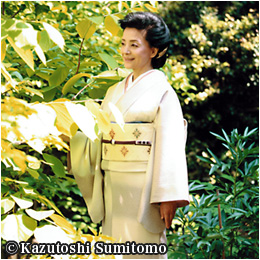JAPAN MUST IMPLEMENT COORDINATION BETWEEN COAST GUARD AND MARITIME SELF-DEFENSE FORCES TO COPE WITH CHINESE THREAT
Chinese intelligence ships are continuing to regularly engage in data gathering operations just outside Japanese waters off the coast of Chiba Prefecture. During a weekly Internet “Genron TV” news show that I host, Professor Yoshihiko Yamada, a renowned oceanologist at Tokai University, explained why the Chinese have focused on this particular geographic area:
“Due to global warming, tidal currents and sea water temperatures are constantly changing significantly. The Kuroshio Current, also known as the Japan Current, originating off the east coast of the Philippines, flows northeastward past the southeastern seas off Taiwan, the Nansei Islands, and the Japanese archipelago, ending up off the coast of Chiba, where it merges with the easterly drift of the North Pacific Current. The Chinese have been collecting date needed to enable their submarines to approach Japan undetected taking advantage of this current, which flows at roughly 3 nautical miles per hour. They are also spying on the areas where Japanese and American submarines are regularly deployed.”
Fumio Ota, another guest on the show and formerly head of the Defense Intelligence Headquarters of the Defense Agency (elevated to ministry status in 2007) added:
“Sound is used to detect submarines from ships. In the sea, submarine sounds are not conveyed in a straight line, but rather, deflected upward or downward depending on the temperature, hydraulic pressure, and salinity concentration of the water. The gap between the directions of the sound is called a ‘shadow zone.’ When submarines enter this zone, they are impossible to detect from ships. I am pretty sure the Chinese are engaged in data gathering operations in the waters off Chiba in order to draw up a strategy designed to deploy submarines.”
Most of us in Japan conduct our daily lives believing that we live in a country where peace is guaranteed. However, this trust in our safety is called into question when one realizes that Chinese spy ships are actually monitoring us just off the coast of Chiba.
Explained Prof. Yamada:
“Since October 2008, these intelligence gathering ships of the PLA (People’s Liberation Army) have been seen passing through the Tsugaru Straits (between Hokkaido and Honshu) to the Pacific side of Japan and then down the coast past Chiba all the way to the seas off Amami Oshima, south of Kyushu. They then head back (towards their base in Hainan Province). They were last spotted in the Tsugaru Straits on February 2. The commercially available nautical charts published by the Japan Coast Guard (JCG) are extremely precise. Ironically, the Chinese have been using these charts to determine how best to take military action against Japan.
“They have already made a thorough survey on where the Kuroshio Current ends. The fact that it flows east of Chiba Prefecture means that Chinese vessels can put Tokyo in their sights at any time, targeting vital strategic targets in the Japanese capital. As you recall, several hundred Chinese fishing ships congregated in the Japanese territorial waters off the Bonin Islands in the fall of 2014 ostensibly for coral fishing. I have no doubt that what the fishermen actually brought back to China was data that is being used to contribute to China’s overall maritime strategy.”
Prof. Yamada warned that the Chinese have now taken a bold step to revise their East China Sea strategy, creating a most precarious situation for the peace and stability of the region. He mentioned that frigates which once belonged to the PLA have been sold to the China Coast Guard with missiles and other large offensive weapons removed, but that these vessels, although painted white, are in fact warships equipped with cannons, which the JCG cannot match.
China Out to Control Third Island Chain
In point of fact, large ships belonging to the JCG are at the most 1,000 tons. Although six of them had previously been disposed to the Nansei Islands—a chain of islands extending from southwestern Kyushu to southern Taiwan—the Abe administration has added four more, with two 3,000-ton ships slated to be added in the not too distant future.
China’s new surveillance ship, CG 2901, boasts a displacement of 12,000 tons. Prof. Yamada notes that China has placed an order with a German manufacturer for ten powerful engines similar to the one aboard the ship.
The JCG does not have ships larger than 10,000 tons, its largest ships being in the range of 1,000 tons at the most. The Japan Maritime Self-Defense Force (JMSDF) does have larger vessels—the escort ships Hyuga and Ise , each of which is 13,950 tons; the supply ships Mashu and Omi (13,500 tons each); and the naval ice breaker Shirase, 12,500 tons.
Even new JCG ships are still equipped with the same 20mm canons with a range of only two kilometers (1.25 miles). China’s CG2901s are equipped with 76 mm and 30mm cannons each with a range of more than 10 kilometers (6.21 miles).
What strategical changes does the recent reinforcement of China’s military preparations in the East China Sea imply? Explained Prof. Yamada:
“I expect China to dispatch several hundred fishing boats, as the JCG continues to engage in operations aimed at defending the Senkaku Islands. We must regard those fishing boats as spy ships operating in tandem with the PLA, all of their crew members as military personnel in disguise. The JCG will be thrown off balance by waves of Chinese fishing boats rushing to the Senkakus, intimidated by CG 2901s equipped with cannons with a range of 10 kilometers. But the Chinese will not be satisfied with taking over the Senkakus alone, as they are after hegemony over the entire East China Sea. All of the ocean platforms they have built ostensibly for underwater gas drilling will turn into off-shore military bases, joined by CG 2901s each carrying two helicopters. These off-shore bases will in effect be combined with land bases on the mainland of China. China’s grand strategy aimed at wresting the whole of the East China Sea can clearly be seen.”
Ota also drew attention to the grand Chinese objective of controlling the third island chain in the Pacific by 2040, after putting the first and second island chains under its control, explaining:
“The ‘strong army’ strategy announced in June 2012 by PLA’s think tank, the Academy of Military Science, defines the area ranging north of 35 degrees South and west of 165 degrees East as the waters mandatory to safeguard China’s national interests. This area does not include Wake, Midway or the Hawaiian islands, but does embrace Australia as well as most of the Mariana, Palau, and Solomon Islands.”
In 2007, China for the first time proposed that the Pacific Ocean be divided up around Hawaii into US and Chinese spheres of influence. That legacy has been prescribed in the “strong army” strategy, prompting Xi Jinping to resort to it as a justification to untiringly urge President Obama to agree to a new big-nation relationship. Beyond that is Xi’s dream of realizing a “great revival of the Chinese people.”
This ambition is supported by China’s aggressive military buildup dating back to 1989. Between 2010 and2013, China managed to add fourth generation fighter aircraft equal to ten squadrons. Ota explained:
“These ten squadrons equal the total number of fourth generation fighter aircraft held by Japan. As of 2015, Japan had only 293 fourth generation fighters against China’s 731.”
F-15s are the state-of-the-art fourth generation fighter aircraft for Japan. In a matter of just three years, China managed to match the total number of these sophisticated warplanes. China’s next goal is development of fifth generation fighters. As the US is already making preparations to deploy fifth generation fighters, namely F-22s and F-35s, the USCC (US-China Economic and Security Review Commission) has charged that China has stolen relevant technologies through cyberattacks.
Needed: Coordination between JCG and JMSDF
The Chinese are prepared to do anything both at home and abroad to advance their interests—including theft. Chairman Xi has started taking drastic measures at home towards making China a military giant. The Chinese leader has recently abolished China’s seven mutually independent military regions and inaugurated five new military regions, substituting the well-integrated operation of all of the PLA’s forces—Army, Navy, and Air Force—for the formerly compartmentalized and inefficient operations.
What should Japan do, as the military imbalance fast widens between Japan and China? Of primary importance are efforts to enhance the Japan-US alliance. Now that the US has its hands full with the Middle East and the presidential election, however, it is vital for each of us to recognize—more clearly than ever before—that we must make a genuine commitment to defending Japan on our own.
We must also strive to remove the elements hindering strengthened coordination between the JCG and the JMSDF. For example, Article 25 of the JCG Act must be revised, as it bans the JCG from performing military functions and prevents its cooperation with the JMSDF. Under present circumstances, a JCG ship off the Senkakus is banned from refueling from a JMSDF supply ship. Instead, the law requires that the JCG ship return to its home port in Ishigaki Island for refueling and head back to the Senkakus—a good three-hour cruise one way at top speed. What a waste of time and labor! And what inefficiency! Elsewhere in the world, the coast guard and the navy of any country work closely together to defend their seas and land. The same practice should apply to Japan as well. It doesn’t cost a dime to make this a reality: a simple revision of the law will do.
In addition, able personnel and sophisticated equipment must be added. What choice is there other than significantly increasing the JCG and MSDF budgets? As we deal with the real possibility of a massive fleet of hostile Chinese warships congregating some day in the waters off Chiba Prefecture, ready to target our capital, we can no longer wait to make this commitment.
(Translated from “Renaissance Japan” column no. 693 in the February 25, 2016 issue of The Weekly Shincho)








